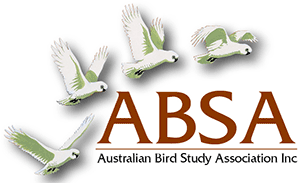ABUNDANCE, SITE FIDELITY, MORPHOMETRICS AND SEX RATIOS OF SCARLET HONEYEATER Myzomela sanguinolenta AT A SITE IN SOUTH-EAST QUEENSLAND
| Posted: |
08/08/2021 |
| Author(s): |
S. J. M. Blaber |
Scarlet Honeyeaters were banded at a study site at Mount Cotton, south-east Queensland from
1986 to 1993. The site consisted of sclerophyll woodland, creek vegetation and a rural garden. There
was a marked seasonal change in Scarlet Honeyeater abundance, with numbers increasing from a
minimum in March to a maximum in August followed by a decline to December. No birds were recorded
in January or February. There was no significant interannual variation in mean trapping rates. The
numbers of birds caught each month were significantly and negatively correlated with rainfall. Changes
in abundance may not be related to availability of blossoms. Morphometric data indicate that males
have significantly greater wing, tail and tarsus lengths than females, and are heavier. The sex ratio
was skewed in favour of males (3:2) and this phenomenon is discussed. Retrap data show that a small
proportion of birds return annually to the study site and are resident for part of the year. The remaining
birds were assumed to be passage migrants, possibly moving inland to the Dividing Range during the
wet season.
>> Download Abstract |
File Size: 118KB
>> Download Complete PDF | File Size: 999KB
